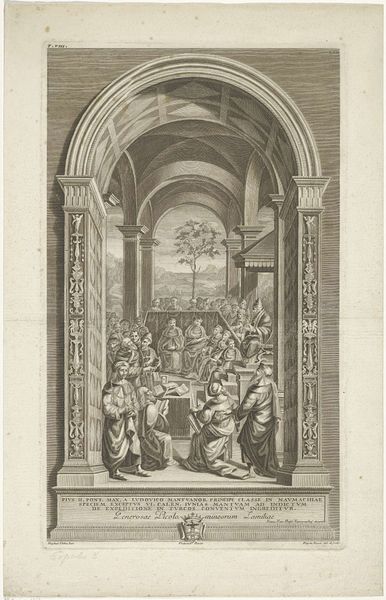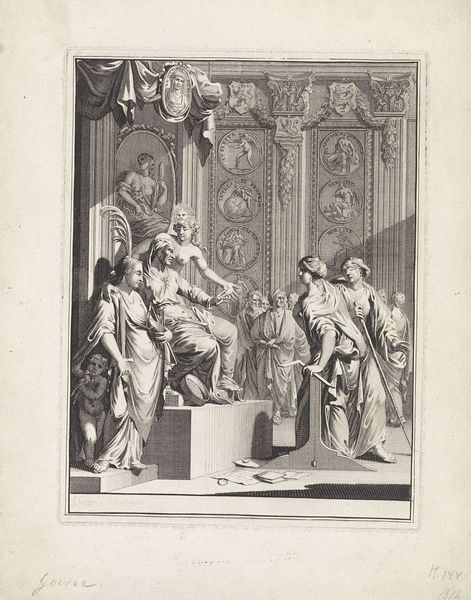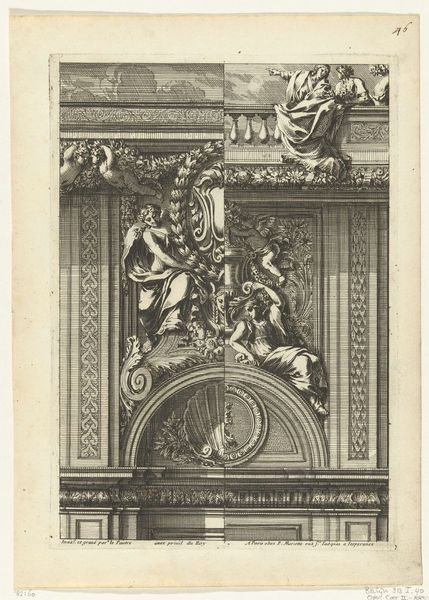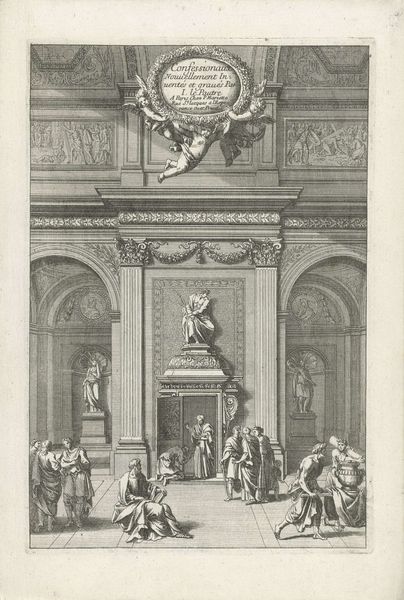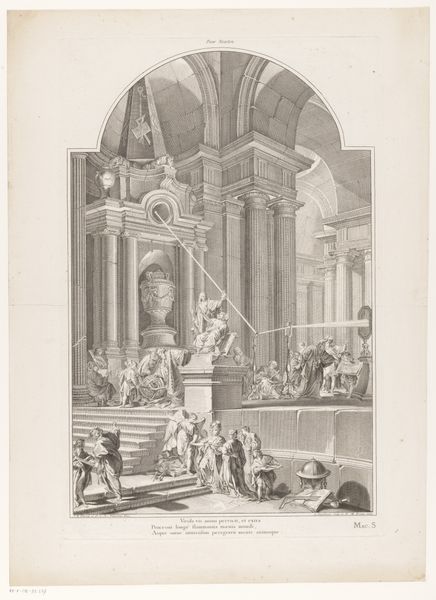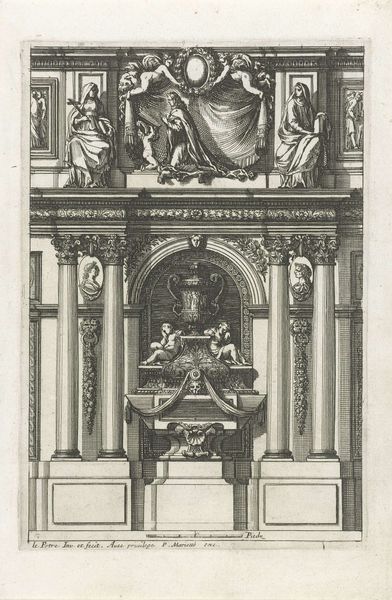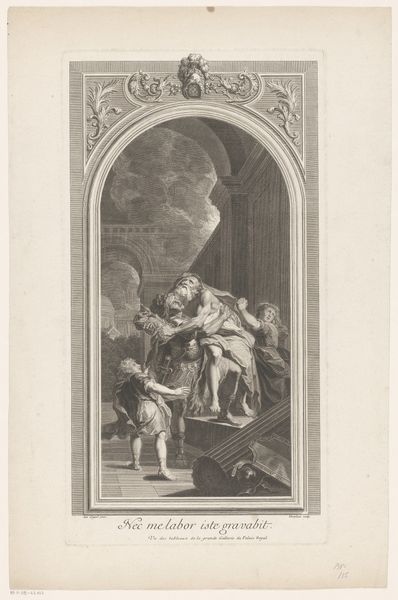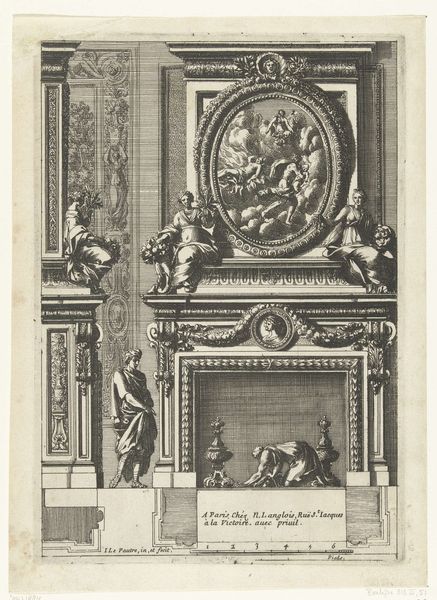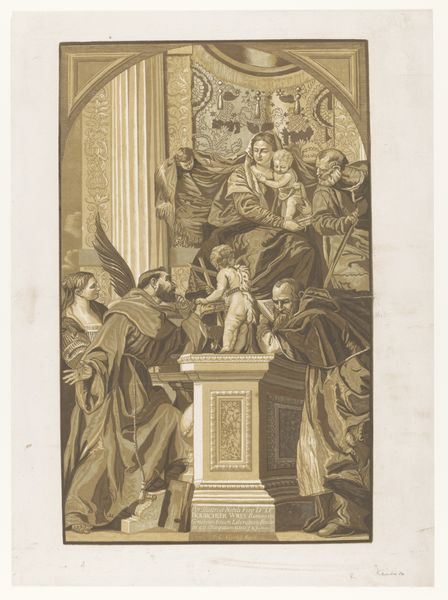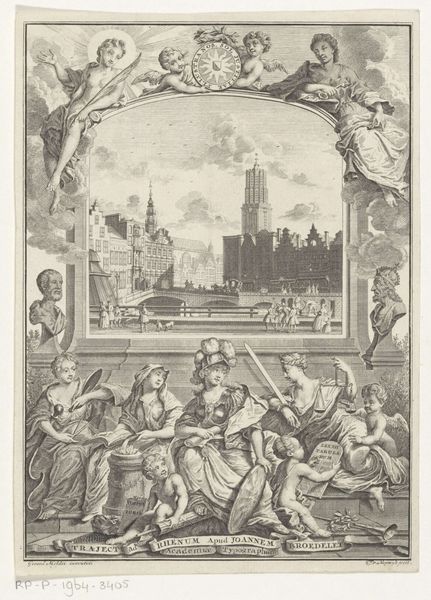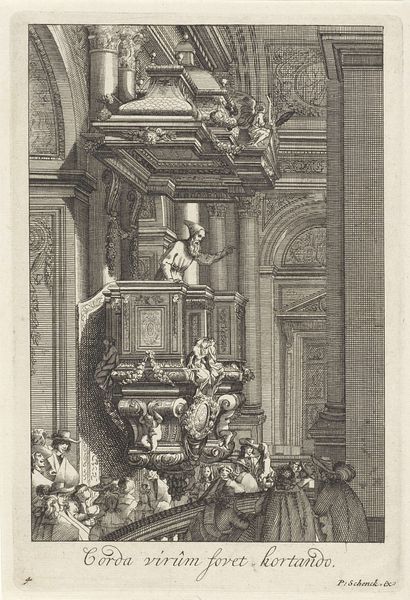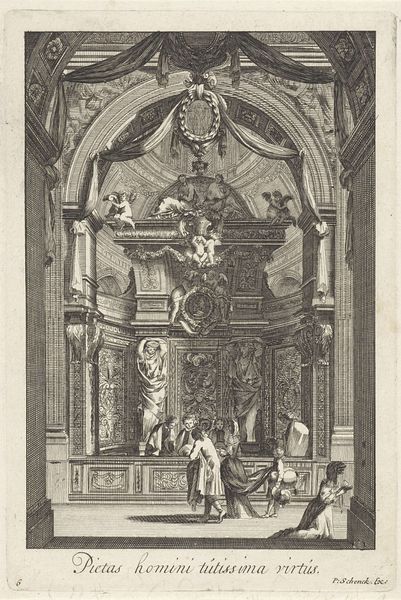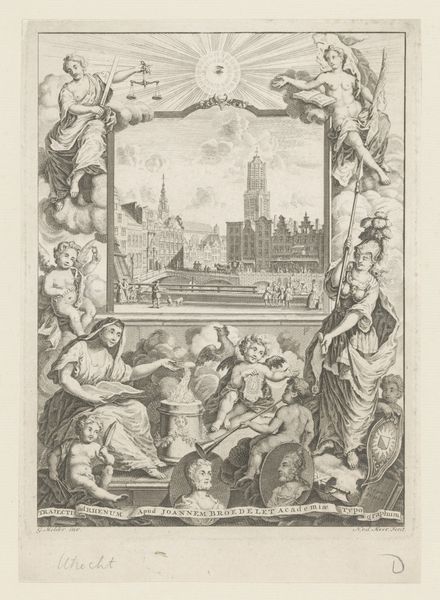
Glasraam 1 in de Sint-Janskerk te Gouda: Vrijheid van Geweten triomfeert over de Tirannie 1738 - 1754
0:00
0:00
pietertanje
Rijksmuseum
print, etching, engraving
#
allegory
#
baroque
# print
#
etching
#
old engraving style
#
19th century
#
cityscape
#
history-painting
#
engraving
Dimensions: height 665 mm, width 313 mm
Copyright: Rijks Museum: Open Domain
Curator: Look at the intricacy! This etching by Pieter Tanjé, titled "Glasraam 1 in de Sint-Janskerk te Gouda: Vrijheid van Geweten triomfeert over de Tirannie," made sometime between 1738 and 1754, captures a pivotal moment in the context of Dutch religious tolerance. Editor: My first impression is one of grand Baroque drama, rendered with incredible detail. It's predominantly monochrome, so the meticulous lines create texture and depth, particularly in the architectural elements. It feels almost theatrical, the way the figures are arranged. Curator: It is theatrical! Tanjé masterfully depicts the triumph of religious freedom over tyranny through elaborate allegory. Consider the architectural setting itself. The column, the arch—each detail emphasizes a sense of civic virtue and authority, suggesting a societal structure built upon these principles. Editor: Absolutely, the architectural setting conveys stability, and highlights the figures that are within it. But even with the grand setting, I keep coming back to the etched lines. Tanjé's process emphasizes light and shadow. Curator: Light and shadow are key rhetorical tools here. Notice how light falls upon the figures representing "Freedom of Conscience," highlighting their virtuous countenance, while "Tyranny" cowers in the shadows. This image wouldn't only decorate the church it commemorates; prints like this circulated widely, becoming tools to popularize this specific view on religious freedoms and the cities that guaranteed them. Editor: Yes, the medium is the message! By choosing printmaking—specifically etching and engraving— Tanjé ensured the widespread dissemination of this ideology. Its accessible form allowed for personal ownership and circulation, embedding its visual and political narrative into domestic and communal spheres. The materiality also influences how we read the social context! Curator: Precisely! By studying works like these, we can analyze shifts in religious toleration but also track how political messages became entangled with everyday objects. Editor: And understanding its production reminds us how meaning is crafted not just by the subject but by how accessible we choose to make it. The lines are quite literally drawn on whose triumph should become embedded in collective visual consciousness. Curator: Seeing this image in light of print's power in disseminating ideology, reminds me of its persistent capacity to inform public debate. Editor: Indeed, a study in material culture opens avenues for seeing history anew, questioning even the structures by which we engage it.
Comments
No comments
Be the first to comment and join the conversation on the ultimate creative platform.
